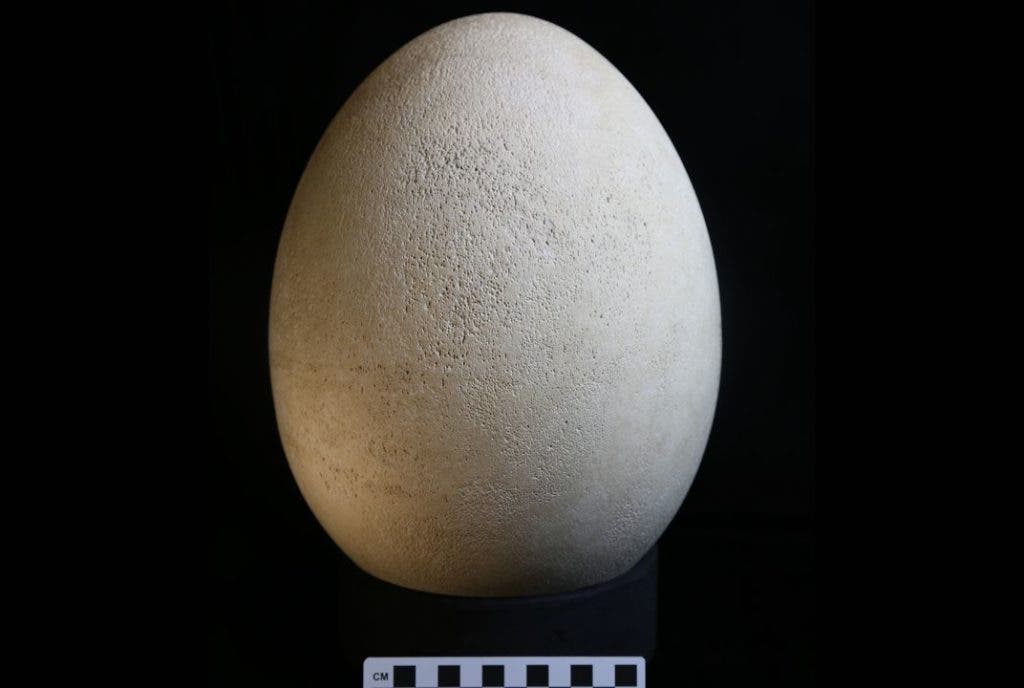It’s one of the biggest and rarest eggs in the world, and it was mislabeled for decades. Curators at the Buffalo Museum of Science found that they were actually storing a massive elephant bird egg, which had been believed to be a replica. Now, after more than 60 years, the egg will finally be displayed in the museum.
Elephant birds are a tragic story. These large, flightless birds once lived on the island of Madagascar. They became extinct, perhaps around 1000-1200 AD, likely after being hunted by humans. The birds were initially widespread, occurring from the northern to the southern tip of Madagascar, but they seemed to have slowly faded out of existence. It’s not just that the birds were hunted — the eggs were especially vulnerable, with recent archaeological evidence suggesting that they were regularly consumed by locals. Travelers also used egg shells as bowls. Today, only 40 or so intact eggs remain in the world, and one was believed to be a replica.
For decades, the egg had been out of view. Standing at one foot tall (30 cm) and measuring more than two feet (60 cm) in circumference, it tips the scale at over 3 pounds (1.8 kg), being roughly the equivalent of 150 chicken eggs.
“It’s the biggest egg laid by any vertebrate ever,” said Kathryn Leacock, the museum’s director of collections — and that includes dinosaurs and other ancient reptiles.
Now, thankfully, the egg will be properly exposed to the world, and we can thank Paige Langle, collections manager of zoology, for that. She was updating the museum’s catalog when she realized that the specimen looked too real to be a model. She kept digging through the collection and found what was clearly a replica, easily distinguishable from the real thing. But the first one still seemed real. So she dug deeper and found that the egg was obtained from a taxidermy collector way back in 1939. At the time, the Buffalo Museum of Science had been trying to acquire such an egg from various collectors, but only one came through. Yet somehow, the egg was mislabeled and placed into the wrong box.

This photo shows a radiograph (X-Ray) of a rare elephant bird egg that curators recently realized is an actual egg from the now-extinct creature. Image credits: Buffalo Museum of Science.
To confirm these suspicions, Langle gave the egg to conservation experts at SUNY Buffalo State who radiographed and authenticated it. The X-ray revealed a yolk sac and specks of white material, indicating the egg had been fertilized, with the white bits potentially being the sub-fossilized early embryonic stages of a developing bird.
The egg will be on display in the museum starting in May.










